Abstract
Cell yields of Rhodopseudomonas palustris grown photoheterotrophically in pyruvate-mineral salts medium were increased by the photooxidation of added thiosulfate. However, thiosulfate had no effect on cell yields of cultures grown aerobically in darkness, although thiosulfate was also oxidized. The presence of thiosulfate increased photosynthetic cell yields on a variety of other organic substrates. Growth of cells in thiosulfate-containing medium, or the addition of thiosulfate to cells grown in thiosulfate-free medium, induced the formation of a thiosulfate-oxidizing system which quantitatively photooxidized thiosulfate to sulfate. R. palustris grew photoautotrophically with thiosulfate as an oxidizable substrate. Large amounts of supplemental bicarbonate carbon were incorporated when cells were grown photosynthetically in pyruvate-thiosulfate medium. Cells harvested after photoautotrophic or photoheterotrophic growth in fumarate-thiosulfate medium fixed 14CO2 at an 8- to 10-fold greater rate when provided with thiosulfate. The evolution of 14CO2 from pyruvate-1-14C during photoassimilation by R. palustris was greatly suppressed by the presence of thiosulfate. The increase in photoheterotrophic cell yields of R. palustris caused by the oxidation of thiosulfate may result from assimilation of substrate carbon which is normally evolved as carbon dioxide.
Full text
PDF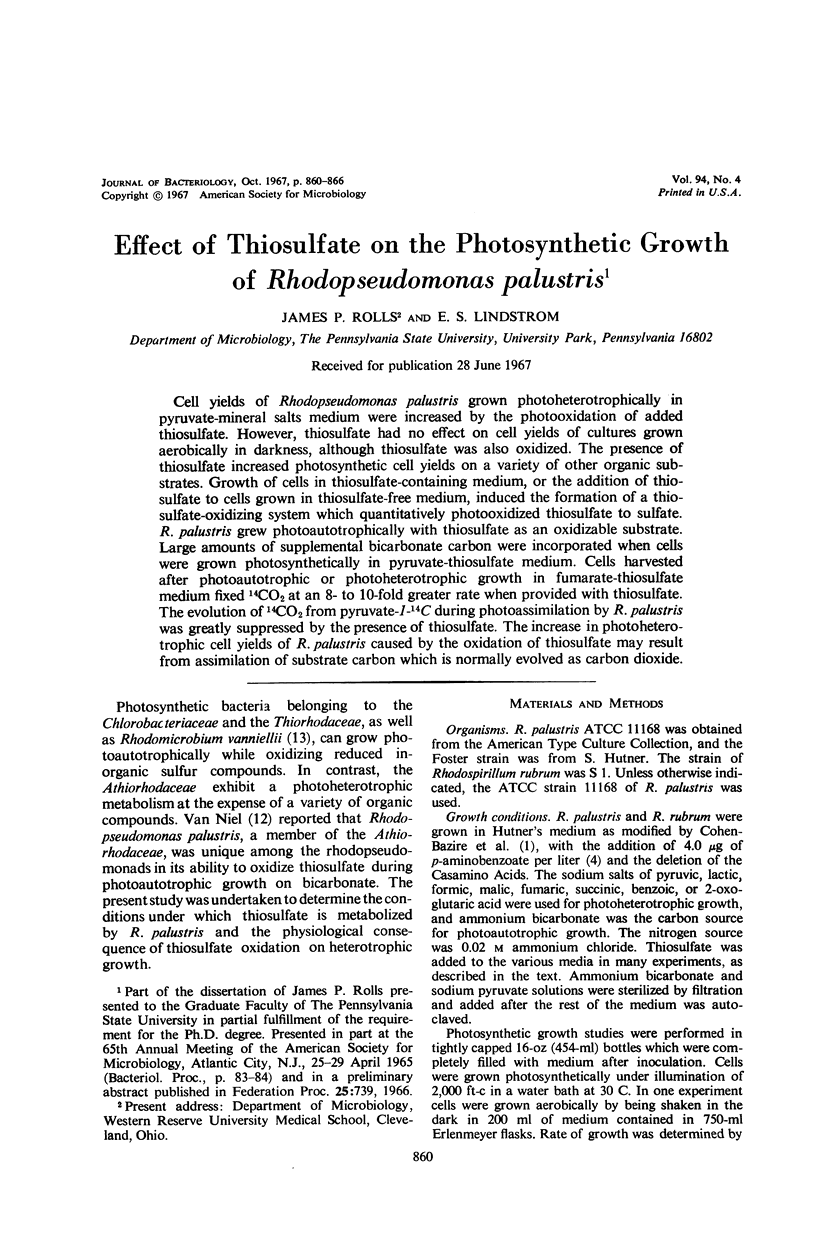
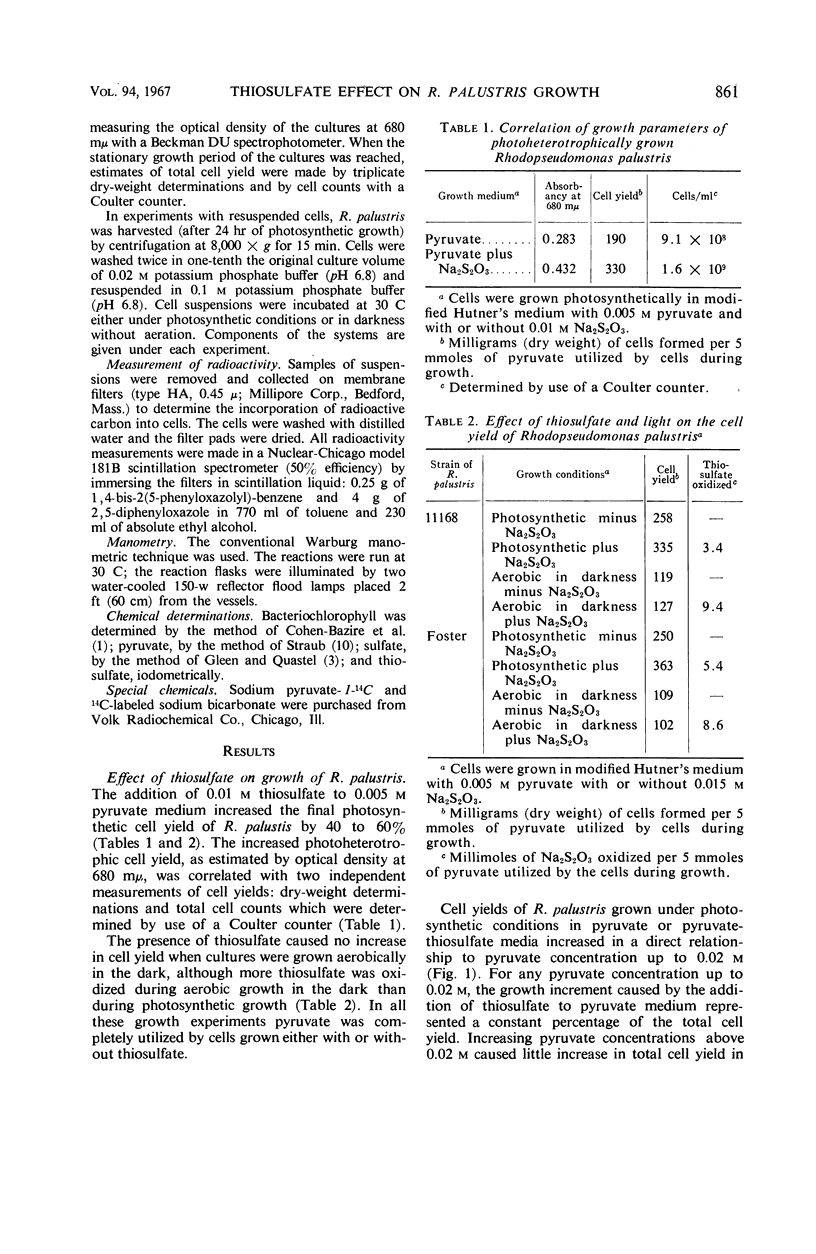
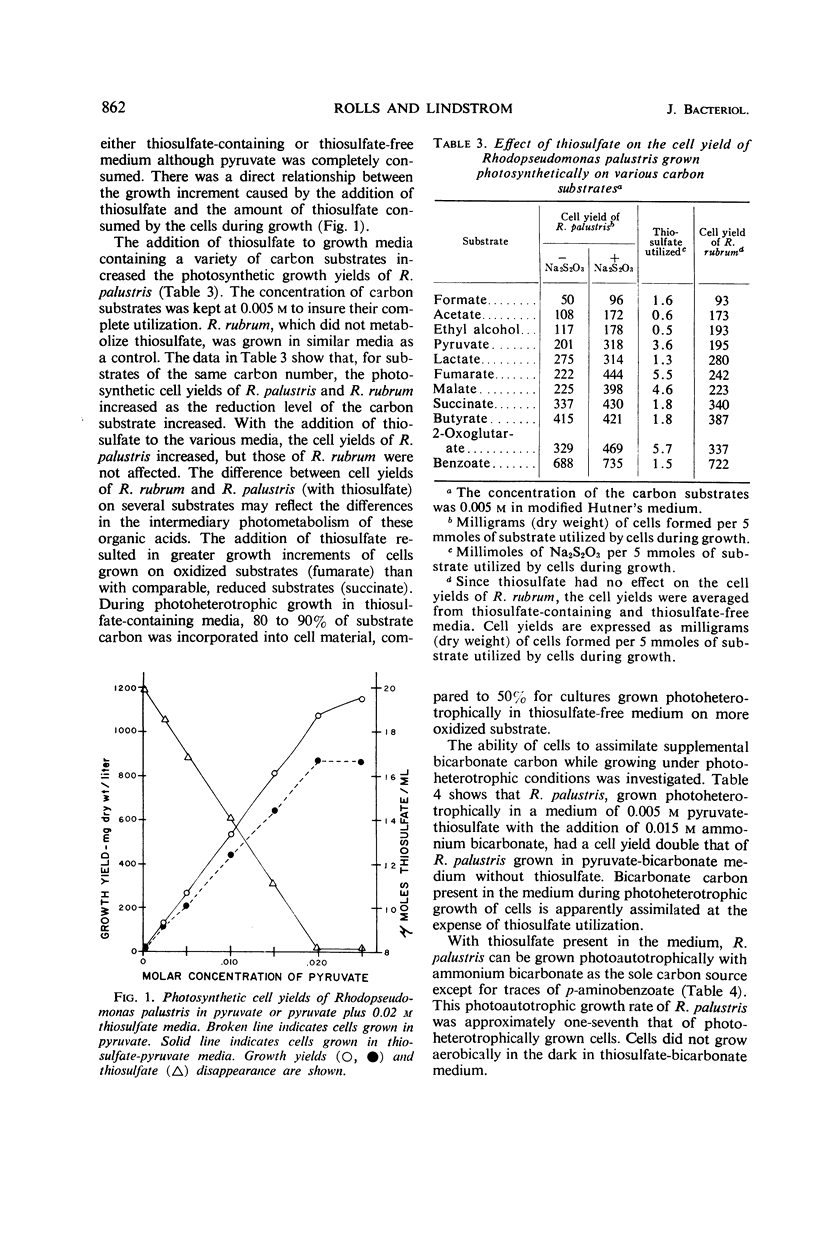
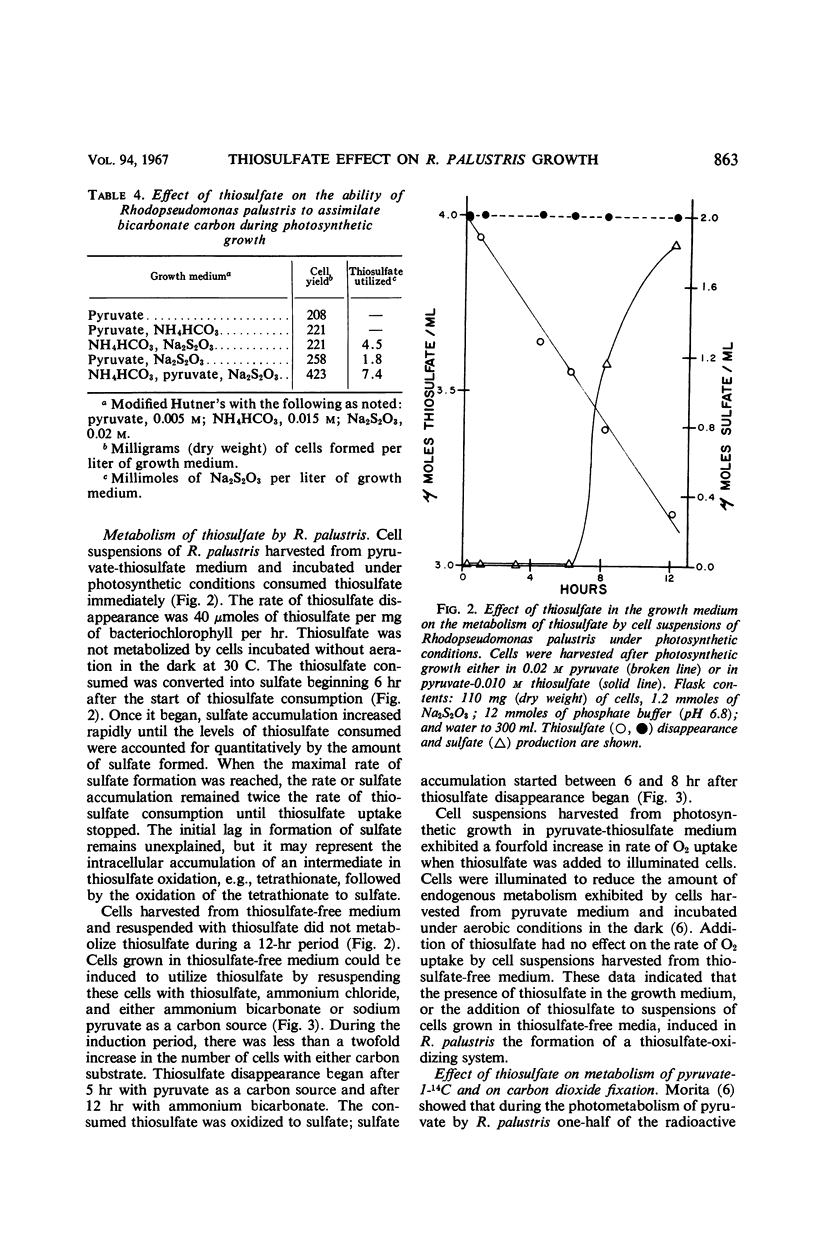

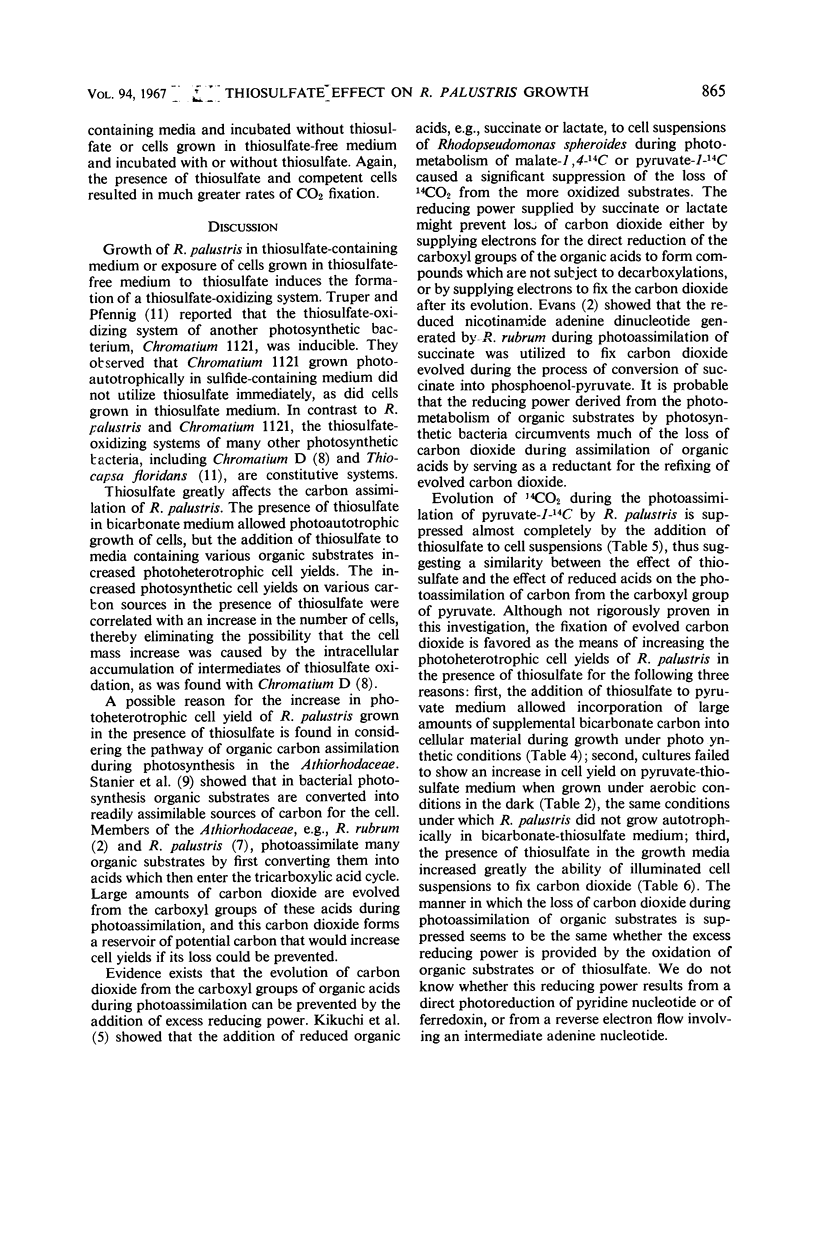
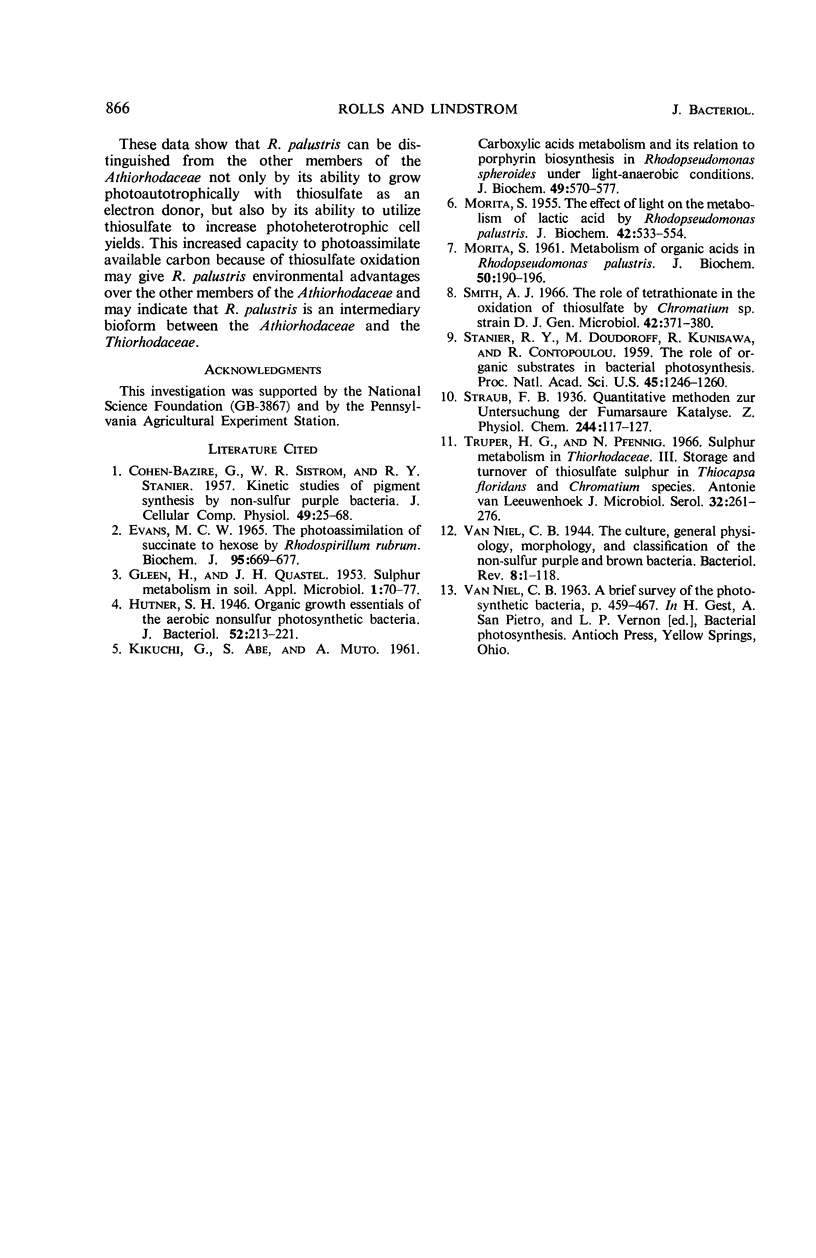
Selected References
These references are in PubMed. This may not be the complete list of references from this article.
- COHEN-BAZIRE G., SISTROM W. R., STANIER R. Y. Kinetic studies of pigment synthesis by non-sulfur purple bacteria. J Cell Physiol. 1957 Feb;49(1):25–68. doi: 10.1002/jcp.1030490104. [DOI] [PubMed] [Google Scholar]
- EVANS M. C. THE PHOTOASSIMILATION OF SUCCINATE TO HEXOSE BY RHODOSPIRILLUM RUBRUM. Biochem J. 1965 Jun;95:669–677. doi: 10.1042/bj0950669. [DOI] [PMC free article] [PubMed] [Google Scholar]
- GLEEN H., QUASTEL J. H. Sulphur metabolism in soil. Appl Microbiol. 1953 Mar;1(2):70–77. doi: 10.1128/am.1.2.70-77.1953. [DOI] [PMC free article] [PubMed] [Google Scholar]
- Hunter S. H. Organic Growth Essentials of the Aerobic Nonsulfur Photosynthetic Bacteria. J Bacteriol. 1946 Aug;52(2):213–221. doi: 10.1128/jb.52.2.213-221.1946. [DOI] [PMC free article] [PubMed] [Google Scholar]
- KIKUCHI G., ABE S., MUTO A. Carboxylic acids metabolism and its relation to porphyrin biosynthesis in Rhodopseudomonas spheroides under light-anaerobic conditions. J Biochem. 1961 Jun;49:570–577. doi: 10.1093/oxfordjournals.jbchem.a127346. [DOI] [PubMed] [Google Scholar]
- MORITA S. Metabolism of organic acids in Rhodopseudomonas palustris in light and dark. J Biochem. 1961 Sep;50:190–196. doi: 10.1093/oxfordjournals.jbchem.a127433. [DOI] [PubMed] [Google Scholar]
- Smith A. J. The role of tetrathionate in the oxidation of thiosulphate by Chromatium sp. strain D. J Gen Microbiol. 1966 Mar;42(3):371–380. doi: 10.1099/00221287-42-3-371. [DOI] [PubMed] [Google Scholar]
- Stanier R. Y., Doudoroff M., Kunisawa R., Contopoulou R. THE ROLE OF ORGANIC SUBSTRATES IN BACTERIAL PHOTOSYNTHESIS. Proc Natl Acad Sci U S A. 1959 Aug;45(8):1246–1260. doi: 10.1073/pnas.45.8.1246. [DOI] [PMC free article] [PubMed] [Google Scholar]
- Trüper H. G., Pfennig N. Suphur metabolism in Thiorhodaceae. 3. Storage and turnover of thiosulphate sulphur in Thiocapsa floridana and Chromatium species. Antonie Van Leeuwenhoek. 1966;32(3):261–276. doi: 10.1007/BF02097469. [DOI] [PubMed] [Google Scholar]
- van Niel C. B. THE CULTURE, GENERAL PHYSIOLOGY, MORPHOLOGY, AND CLASSIFICATION OF THE NON-SULFUR PURPLE AND BROWN BACTERIA. Bacteriol Rev. 1944 Mar;8(1):1–118. doi: 10.1128/br.8.1.1-118.1944. [DOI] [PMC free article] [PubMed] [Google Scholar]


